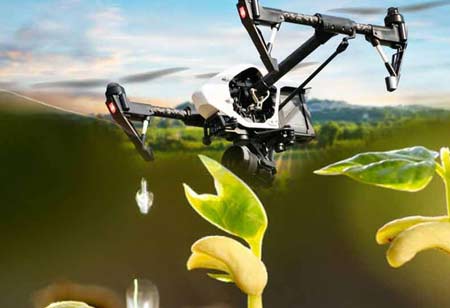Thank you for Subscribing to Agri Business Review Weekly Brief
Major Technologies to Improve Precision Agriculture
Implementing precision agriculture technology requires specialists as it uses hardware and software.

By
Agri Business Review | Sunday, June 05, 2022
Stay ahead of the industry with exclusive feature stories on the top companies, expert insights and the latest news delivered straight to your inbox. Subscribe today.
Farmers can access information on soil survey maps and regionally specific plant traits thanks to advanced technology in precision agriculture.
FREMONT, CA: Implementing precision agriculture technology requires specialists as it uses hardware and software. Farmers are capable of coping on their own with a little bit of further work. The collection of all the necessary information in precision farming needs the use of special equipment and software. The former leverages planning, production, mapping, scouting, and controlling a machine. These solve more global problems, like real-time yield state analysis.
Global Positioning System (GPS)
GPS is a ground-based technology that enables producers to collect data with precise location information in real-time in precision agriculture. The following tasks are suitable for GPS such as mapping irrigation systems, fields, and roadways and finding problem plant regions. It helps test the soil in particular fields, tractor driving with a parallel steering system, and VRA for precise seed and fertilizer application. GPS in precision agriculture enables the management of agricultural equipment. For instance, producers can operate tractors with its aid in low visibility caused by rain or fog.
Geographic Information Systems (GIS)
GIS is used in precision agriculture to construct digital maps using item information and location data. Remote sensing is required to segment the farm into distinct zones. Each zone has unique characteristics for using GIS and GPS. These zones are typically classified based on the soil type, available nutrients, soil moisture content, pH level, and pest infestation. Aerial shots and satellite images add to the information. GIS's ability to compare and manipulate data layers to compare and contrast various farm management approaches is another useful capability.
Dusters and UAVs
Unmanned aerial vehicles (UAVs) are the foundation of aerial technology leveraged for crop management. As a result, farmers can keep an eye on the state of the yield without physically inspecting every field. Crop dusters appear to be the simplest option because farmers already use them for seeding and watering. Any agricultural aircraft can be equipped with a hyperspectral camera to capture the necessary data. It will result in increased environmental contamination and quicker gadget wear. Using this strategy requires hiring a licensed pilot. Precision agriculture benefits significantly from the use of UAVs or drones. They need less fuel and can manage remotely. Precision agricultural drones can do in-depth multispectral, thermal, and hyperspectral soil investigations on the field.





